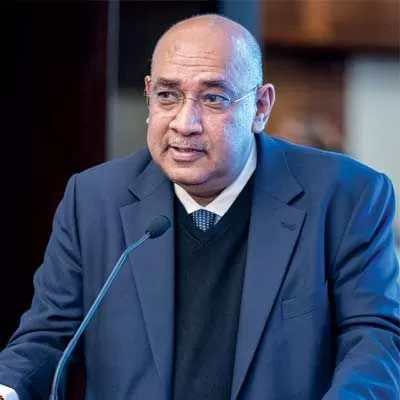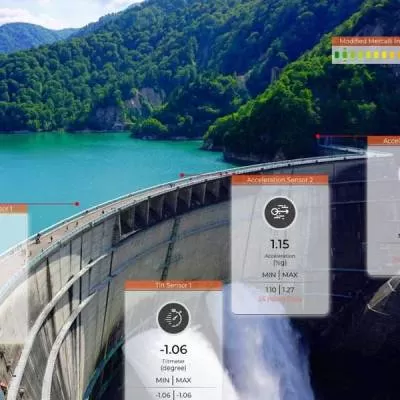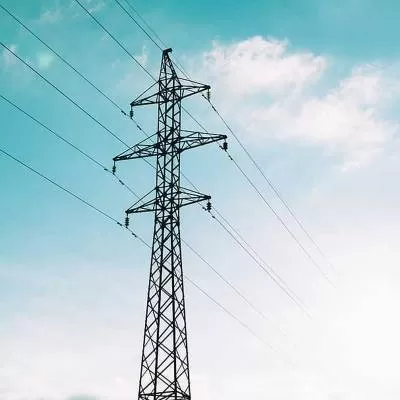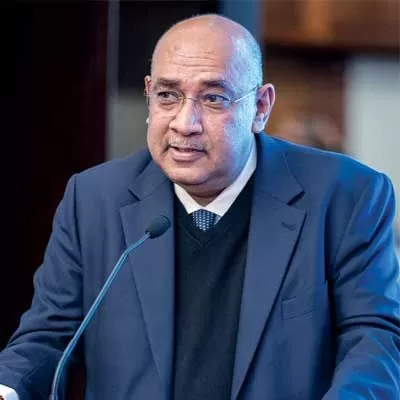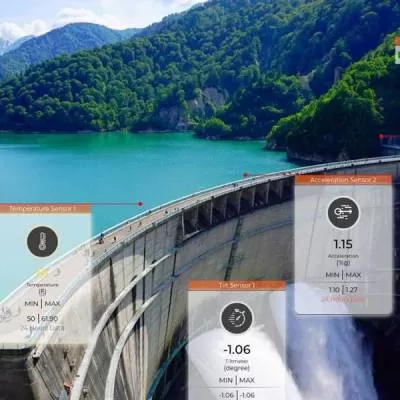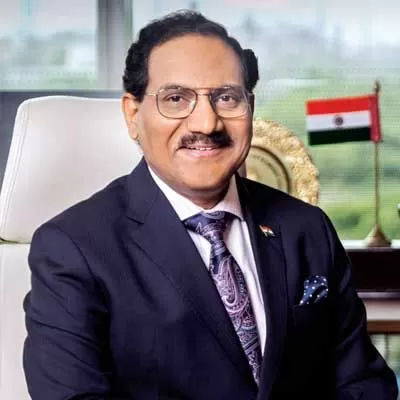- Home
- Infrastructure Energy
- POWER & RENEWABLE ENERGY
- How india is losing Rs.3 trillion in projects!
How india is losing Rs.3 trillion in projects!
Read full article
CW Gold Benefits
- Weekly Industry Updates
- Industry Feature Stories
- Premium Newsletter Access
- Building Material Prices (weekly) + trends/analysis
- Best Stories from our sister publications - Indian Cement Review, Equipment India, Infrastructure Today
- Sector focused Research Reports
- Sector Wise Updates (infrastructure, cement, equipment & construction) + trend analysis
- Exclusive text & video interviews
- Digital Delivery
- Financial Data for publically listed companies + Analysis
- Preconceptual Projects in the pipeline PAN India
A total of 371 projects – each amounting to Rs.10 billion or more – are delayed across the railways (leading with 174 delayed projects), power, roads and urban development with time and cost overruns compared to the original schedule. CW probes into the key reasons for delays while offering recommendations from the industry to overcome the same. Over the past few decades, India has witnessed the launch of several big-ticket infrastructure projects, pumping billions into the country’s aviation, industrial development, smart cities, railways, roads and energy sectors. However, the scale of the projects have also led to delays in some of them. The most recent available Flash Report (September 2018), published by the Ministry of Statistics and Planning, is testament to this. The number crunch According to the report, out of 1,420 central-sector infrastructure projects worth Rs 1.50 billion and above, 385 are on schedule, 366 projects are delayed, 358 projects reported cost overruns, and 136 projects reported both time and cost overruns with respect to their original schedules. That said, around 32 projects have reported additional delays vis-à-vis their date of completion. Of these 32 projects, 14 are mega projects costing Rs 10 billion and above. The total original cost of implementation of the 1,420 projects when sanctioned was Rs 18.05 trillion but this was subsequently revised to Rs 21.63 trillion, implying a cost overrun of Rs 3.38 trillion (20 per cent of the original cost). The expenditure incurred on these projects till September 2018 is Rs 7.83 trillion, which is 36.21 per cent of the anticipated cost of the projects. However, the number of delayed projects decreases to 300 if delay is calculated on the basis of latest schedule of completion. Further, for 651 projects, neither the year of commissioning nor the tentative gestation period has been reported. Out of 366 delayed projects, 100 (27.32 per cent) projects have an overall delay in the range of one to twelve months, 69 (18.85 per cent) projects have a delay in the range of 13 to 24 months, 91 (24.86 per cent) projects have a delay in the range of 25 to 60 months and 106 (28.96 per cent) projects have a delay of 61 months and above. The average time overrun in these 366 delayed projects is 45.95 months. Way to delay Every project is unique and has its own challenges, which result in delays and cost overruns. Some typical reasons encountered are delays in land acquisition and/or land transfer for project execution; statutory approvals such as environmental compliances, forest clearances and coastal zone clearances; and project funding constraints. In addition to the typical reasons, as India starts implementing mega projects, Jai Prakash Shivahare, Managing Director, Dholera Industrial City Development Company (DICDL), shares some of the less talked about but still quite common reasons that result in delays: “Unrealistic expectations of project timelines, which get mandated in the contract; delays in invoice payments by owners; contractors not adequately understanding or prepared for the bid; and lack of use of internationally accepted contractual standards such as FIDIC (which is especially important in international tenders).” For his part, the only reason for delay Sunil Srivastava, Managing Director, BARSYL, quotes is “bad planning, be it timelines, money, manpower, etc.” Bad planning starts with undercutting budgets to get the plan approved. Meanwhile, Devendra Jain, Executive Director and CEO, Dilip Buildcon, views project delays from two perspectives: That of the company or contractors, and that of the client (government agencies). “There are external scenarios such as compensation to land owners, arbitration over ownership of land and impediments despite 80-90 per cent of the land being in place,” he points out. Jain drives the point that if contractors have the capacity and ability to commission the project on time, the government should support them by putting permissions in place. He adds, “At times, when in-house project engineers or independent agencies identify some discrepancies, government agencies take time in amending suggested changes.” Yogesh Jain, Managing Director, PNC Infratech, lays emphasis on, “delay in shifting of utilities and securing forest clearances for either diversion or tree cutting also contribute to considerable delays.” And, though HAM has proved to be a successful model to date, Devendra Jain adds, “PSU banks are reluctant to fund these projects. While banks have their own NPA issues to sort out, they are unable to provide the required funding for working capital.” With regard to funding, Dr Ritesh Chandrashekar Tiwari, Director-Highways & Structures, Egis India, says, “Lack of clarity leads to conflict and lack of funds. And, in some way, both are intertwined. There is a lack of central planning for cities, which can look at long-term plans, say for the next 50 years, and then start allocating funds and resources.” Once this is in place, the implementing bodies could be empowered to take on day-to-day operations to complete the project. In the view of Sandeep Upadhyay, Managing Director & CEO, Centrum Infrastructure Advisory, financial stress is something that actually has to circle back with the model of the government. “We are definitely better on the policy side but issues of land acquisition, approvals and clearances have been languishing for the past four to five years. This will result in immense financial stress for the contractors.” Adding to the list, Dr A Sivathanu Pillai, President, Project Management Associates India, says: “There is lack of review and corrective system. Also, project management methods and techniques are not used. Project managers are identified on the basis of their functional/engineering experience and qualification, which may not have any correlation with their competence levels of successfully managing projects.” Weighing in, Jagdish Salgaonkar, Senior Vice President-Major Programmes, Aecom, says, “We lack accurate technology to execute the projects. Because labour is not expensive, we avoid the machines that could easily expedite the schedule.” And, RK Pandey, Member-Projects, National Highways Authority of India (NHAI), affirms, “While there are many issues pertaining to project delays, NHAI has taken a stand whereby we will award the project only if we acquire 90 per cent right of way. That is why we have awarded fewer projects during the year. Recently, we have also modified the documents for land acquisition and contractual terms.” Sectors with a lag Consider this: Of a total of 371 projects – each amounting to Rs 10 billion or more – delayed across four sectors, the railways takes the lead with 174 delayed projects, followed by road transport and highways at 127 projects; power at 56; and urban development at 14 projects. The September 2018 Flash Report clearly indicates these numbers with time and cost overruns compared to the original schedule. The report also analyses sectoral delays with projects amounting to Rs 1.50 billion and above. (Refer to list of select projects on page 58.) In case of the railways, the total original cost of implementation of 375 projects when sanctioned was Rs 4,783.59 billion but this subsequently increased to Rs 7,253.43 billion, implying a staggering cost overrun of 51.6 per cent. The expenditure incurred on these projects till September 2018 is Rs 1,723.61 billion, which is 23.8 per cent of the anticipated project cost. Some major projects that faced delay and cost overruns included the Western Dedicated Freight Corridor. The project, worth Rs 165 billion, which commenced in 2007 is now facing an additional cost overrun of Rs 345 billion. The current project cost is around Rs 511 billion. Similarly, the Eastern Dedicated Freight Corridor Project, which was inaugurated with much fanfare in 2006, is facing an additional cost overrun of Rs 165 billion from its original cost of Rs 115.89 billion. The total cost of the project is Rs 281.81 billion. Over the years, the power sector witnessed an overall cost overrun of 21.3 per cent to Rs 3,725.25 billion as against the original cost of Rs 3,072.23 billion for 105 projects. The expenditure incurred on these projects till September 2018 is Rs 2,345.28 billion, which is 63 per cent of the anticipated project cost. By far, the power sector has seen the maximum cost incurred on projects (percentage-wise) as against other sectors. In the roads sector, out of 574 projects, two projects are ahead of schedule, 81 projects are on schedule and 90 projects are delayed. Surprisingly, 368 projects do not have fixed dates of commissioning and 33 projects were sanctioned without any commissioning date but subsequently dates of completion were finalised. The total original cost of implementation of 574 projects when sanctioned was around Rs 3,869.25 billion, but this was increased to Rs 4,011.59 billion implying a cost overrun of 3.7 per cent. The expenditure incurred on these projects till September 2018 is Rs 1,326.43 billion, which is 33 per cent of the anticipated cost of the projects. Urban development, too, was privy to project delays and cost overruns. The total original cost of implementation of 61 projects, when sanctioned, was Rs 1, 717.44 billion, but this was subsequently increased to Rs 1,794.53 billion, implying a cost overrun of 4.5 per cent. The expenditure incurred on these projects till September 2018 is Rs 736 billion, which is 41 per cent of the anticipated cost of the projects. Contractual loopholes While the delay saga continues, something is brewing in India’s current contractual agreement scenario. Here, Dr Tiwari highlights how most contractors are not rewarded despite timely completion of projects. He supports contractors’ demands for incentives over and above the promised amount to complete projects on time. “This will help companies to focus more on building their reputation,” he says. “Also, there need to be checks and balances at the client’s end at a more stringent level to monitor delays so that they can be addressed and minimised.” RA Rajeev, Metropolitan Commissioner, Mumbai Metropolitan Region Development Authority (MMRDA), explains the downside of the current system in a nutshell. According to him, PPP is yet to evolve in India owing to policy changes every five to six years. However, his inclination towards EPC mode is evident as many projects in Maharashtra are based on cash contracts. “In India, EPC contracts terms and conditions have properly evolved over the years,” he adds. Although quite a few Indian projects are being implemented by foreign companies, the country has the potential to attract more international bidders. For his part, Salgaonkar is a firm believer of international contractual practices. “Owing to India’s lopsided contractual agreements, not many international bidders participate, especially from Europe,” he says. Even EPC contracts are modified by the Planning Commission, whereas the international community is familiar with the guidelines of the FIDIC contracting terms and adheres to them. Upadhyay raises the red flag on India’s contractual agreements as they mostly favour clients. “After the Vijay Kelkar Committee, there has been a strong impetus on balancing out the contractual obligations from both the public and private prospective for all EPC and HAM projects, which is working in favour of the roads and highways sector,” he adds. Recently, the Ministry of Road Transport and Highways has revised the model request for proposal (RFP) and contract agreement for National Highway projects to be executed on EPC model. The revised model suggests that in no event shall the cumulative length of encumbered or hindered sections of project highway exceed 10 per cent of the total length. “In case both parties to the agreement comply with the above provision in letter and spirit without any dilution and the concerned authority takes all the required advance actions in fulfilling the above indispensable requirement of exclusive possession of 90 per cent right of way of the project highway, it will certainly help mitigate risks effectively,” says Yogesh Jain. Srivastava suggests weightage for technical competence, past history of timely delivery and core competence in contractual agreements. He cites the example of European countries where the lowest and highest bidders are eliminated during the pre-bid process. “Such practices must be implemented in India, especially for mega projects,” he avers. All considered, most contractors believe that government contracts are one-sided the majority of times and criticise the implementing authorities, believing they look down upon contractors as outsiders, not partners. States need to communicate There’s another undeniable reason for project delays: States working in silos, thus disrupting project execution. An analysis of the September 2018 Flash Report reveals the top five states, with more than 400 projects together, who are costing the exchequer Rs 6 trillion. In return, the expenditure on these projects seems to be subdued as these five states have spent a mere Rs 2.52 billion over the past two decades. Topping the chart is Maharashtra. The state has witnessed a cost overrun in 129 projects to the tune of Rs 1.99 trillion. However, when it comes to expenditure, Maharashtra has spent merely Rs 688.89 billion. The next in line is Uttar Pradesh. While the state has crossed a century in project delays, the cost overrun attributed to these projects was Rs 1.31 trillion as against Rs 1.27 trillion. Again, just Rs 485.88 billion was spent on these projects. Bihar has also faced delays and cost overruns in 90 projects amounting to Rs 1.12 trillion as against the original cost of Rs 754.87 billion. Odisha, which recently witnessed the launch of numerous projects by Prime Minister Narendra Modi, is not far behind! The state’s 81 projects have incurred cost overruns to the tune of Rs 970.21 billion, spending Rs 288.95 billion. Last, Tamil Nadu witnessed Rs 1.31 trillion of cost overruns against the original Rs 1.27 trillion for 70 projects. The state has spent Rs 611.08 billion on these projects. The numbers aside, it is evident that the country is witnessing an infrastructure boom. Sectors such as railways (mainly metro), roads, smart cities, port-led development projects and greenfield industrial cities are drawing huge investments and providing immense opportunities to medium to large developers and contractors. Notable upcoming projects include the Mumbai Coastal Road, the bullet train, industrial corridors, and projects being awarded under the Bharatmala and Sagarmala schemes. However, the delay relay needs to reach its finish line to ensure these landmarks see the light of day – soon. India will require 7 million new project managers in the next 10 years! According to a survey by the Project Management Institute (PMI), around $1 million is wasted every 20 seconds collectively by organisations world over owing to ineffective implementation of business strategy arising from poor project management practices. This works out to roughly $2 trillion wasted in a year! Although at 8.1 per cent, or $81 million per $1 billion, India currently represents the lowest average monetary waste on projects; this is bound to increase with the expansion of its economy. In fact, India will require 7 million new project managers in the next 10 years. Unfortunately, in today’s physical infrastructure space, project managers have not been given their due. According to Sunil Srivastava, Managing Director, BARSYL, “It is the IT industry that has realised that if it has to compete globally, it needs good project managers.” Ironically, the basis of project management began from the construction industry, which it appears to have let go of in the present scenario. “Compared to the size of the industry, there are few qualified managers,” Srivastava points out. “The project manager has the role of pre-empting potential delays and taking the necessary actions to minimise or avoid delays by analysing various socioeconomic and political stimuli and using past experience of being in similar situations,” says Dr Ritesh Chandrashekar Tiwari, Director-Highways & Structures, Egis India. And, Dr A Sivathanu Pillai, President, Project Management Associates India, says, “A project manager should possess project management competencies covering people, practices and perspectives.” Rather than just project management, Jagdish Salgaonkar, Senior Vice President-Major Programmes, Aecom, looks into the role of a programme manager, which though not well-defined in the current scenario, involves a compilation of various disciplines. “So, a city building project would have 15 different disciplines, such as wastewater, storm drain, power, gas, ICT, roads, and others,” he explains. “Every single utility will conflict with each other at some point if not managed correctly. These are all individual projects but have to be done simultaneously.” That said, a programme manager deals with the white spaces between the projects. While conflicts cannot be eliminated totally, they can certainly be minimised to save on additional cost. And, that’s the value addition programme managers bring in. However, it is the project manager who knows the project in and out and handles the overall budget. As Srivastava affirms, “They can be the best solution providers to the issue of project delays.” Realigning Strategies to Mitigate Project Risks As the industry steps into 2019, companies are strategising to ease project risks. Here’s how! “Being an integrated infrastructure solution provider, involved in investment, development, construction, operation, maintenance and management of highway projects, keeping in view the new model contract document, experience gained in dealing with the land and other issues and ever-changing socio-political scenarios, the process of realignment and reengineering is already underway in the company, which will continue in 2019 to mitigate project risks,” says Yogesh Jain, Managing Director, PNC Infratech. This being an election year, Devendra Jain, Executive Director and CEO, Dilip Buildcon, does not see many bids on the platter. “So, for orders bagged, we will start work soon. As a company, for the next two to three months, we will not be bidding aggressively owing to various factors at the government and market levels. However, depending on the results of the elections, we may streamline our strategies in Q2 FY20.” In Dholera, Dholera Industrial City Development Company (DICDL) has already undertaken international best practices since 2013. For proper management and execution, a SPV was formed between the state of Gujarat and DMICDC. The Program Manager for New Cities (PMNC) in charge has implemented best practices in programme management, including project scheduling, cost control risk assessment, online collaboration platform, 3D design and asset management, to name a few. “As an example,” says Jai Prakash Shivahare, Managing Director, DICDL, “we are happy to mention that in 2013, the first phase of the Dholera programme was estimated at Rs 44 billion and now, five years later, after issuing over a dozen contracts worth almost Rs 30 billion, the final estimated budget is Rs 43.50 billion, about the same as the original 2013 budget. This speaks volumes about our cost control and risk management.” For its part, NHAI has already aligned its strategies for project award till 2020. “Our DPRs are in advanced stages,” says RK Pandey, Member-Projects, NHAI. “Also, we have identified six to seven corridors and are working on it.” Meanwhile, Sunil Srivastava, Managing Director, BARSYL, says, “We have become extremely stringent in terms of project funding. We ensure project funding is available, land and other clearances are in place; else, we decline the project. This helps us mitigate risk to a large extent.” Industry speak: Integrated and sustainable remedies for project delays CW collates key suggestions and recommendations from industry bigwigs on possible solutions to avoid project delays. Yogesh Jain, Managing Director, PNC Infratech: • “If project proponents take discernibly advanced actions on contentious matters before award of the projects for implementation, it can greatly help in avoiding time and cost overrun in execution. • With land, utilities and forest clearances being essentially in the domain of state governments, for integrated and sustainable solutions, central project proponents like MoRTH, NHAI and NHIDCL should have a deep understanding of the real issues and endeavour to undertake relentless coordination and intense follow-up with the concerned state government departments with both the top-down and bottom-up approaches. • While NHAI and other Central Government authorities are waffling in resolving the above issues, state-level authorities like UPEIDA, MSRDC and MPRDC are able to acquire the required land in a timely manner for their projects. The Agra-Lucknow, Purvanchal and Mumbai-Nagpur Expressway projects are examples where around 90 per cent of the required land was made available at the time of project award. These state-level authorities deploy large, dedicated teams comprising both working and retired employees of the revenue, forest and utility departments of respective state governments to resolve these issues in a time-bound and sustainable manner. MoRTH, NHAI and NHIDCL should consider emulating a similar framework mechanism for their projects.” Jai Prakash Shivahare, Managing Director, Dholera Industrial City Development Company: • “Issues related to project delays should be addressed before and during design, and followed by close monitoring of performance on a regular basis. For example, all mega projects must go through an independent value engineering and planning exercise to ensure that the expectations set are realistic and that bidders of repute will bid and are properly engaged during the bidding process.” RK Pandey, Member-Projects, NHAI: • “Project execution involves not only Central Government agencies, but the states too. There are several instances where a contractor is unable to procure the required raw materials such as aggregates or the required permissions at state level, which leads to delay in project execution. Hence, state agencies should come forward and facilitate the necessary permissions so to avoid the scenario.” Jagdish Salgaonkar, Senior Vice President-Major Programmes, Aecom: • “For significant big-ticket projects above a certain size, an independent assessment should be mandated in terms of understanding what it will take to execute the work. For instance, if the project has a timeline of three to four years, an assessment needs to be conducted to be sure if this is reasonable. Independent value engineering will also help in addressing, in an integrated manner, various permits, land handover, etc.” Dr A Sivathanu Pillai, President, Project Management Associates India: • “Recognising project management as an independent competence, separate from the technical qualifications and experience of the project professional, will prove beneficial. To control delays, people managing projects should be competent in project management techniques. This calls for establishing a standard for project management competence across industries and all levels. This needs active patronage by the Government of India and industries, by the recognition of project management certification as a mandatory requirement for all project-related roles and positions.” RA Rajeev, Metropolitan Commissioner, Mumbai Metropolitan Region Development Authority: • “Inter-department coordination for various approvals related to the project should be stronger. One classic example is the Maharashtra chief minister’s ‘war room’, which has been successful in avoiding delays in mega projects by increasing interdepartmental coordination. Similarly, the Prime Minister’s Pragati meetings that he conducts through video conferencing with chief secretaries across states along with his secretaries and ministries. The effort here is to reduce intergovernmental delays in clearances. These are the two best examples of how intergovernmental and interdepartmental delays can be avoided.” Devendra Jain, Executive Director and CEO, Dilip Buildcon • “Authorities such as NHAI should come up with single-window solutions for project execution. If they are able to do so, it is unlikely that projects will witness a time and cost overrun. • As many agencies, including MoEF, MoRTH, Revenue Department, Utilities Departments, Railways, etc, involved in project execution, must form either a district-wise or state-wise team for every project and work in tandem. This will lead to faster project clearance. With this, the team can also give some kind of guarantee, collateral or comfort level to banks so that funding will be swift for projects. Such a practice will gain the trust of banks. But such initiatives must be implemented from the Centre’s side as states have their own issues when it comes to dealing with the Central Government. • The government can also come up with a particular standard of procedures for project execution. In fact, it must call the CEOs of top contracting firms to collectively recommend integrated solutions. SHRIYAL SETHUMADHAVAN and RAHUL Kamat


